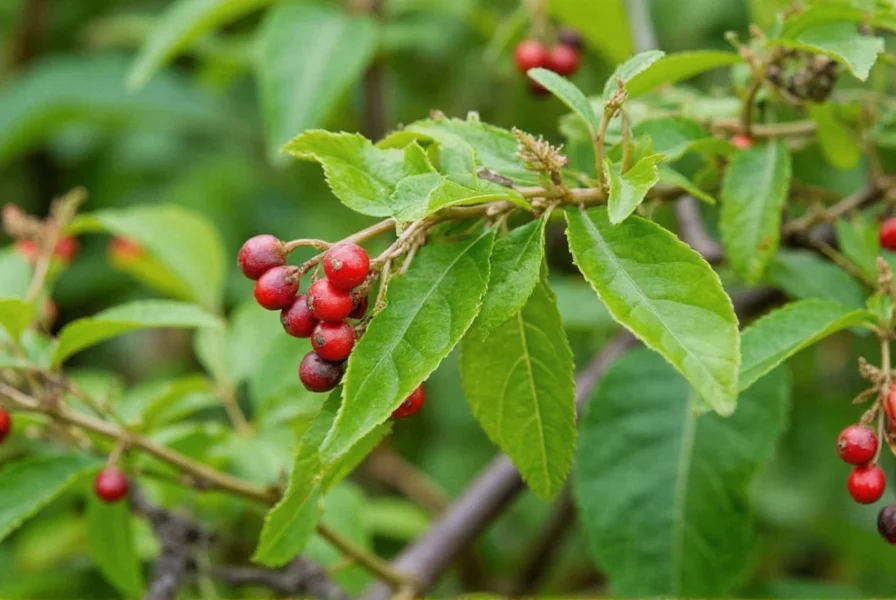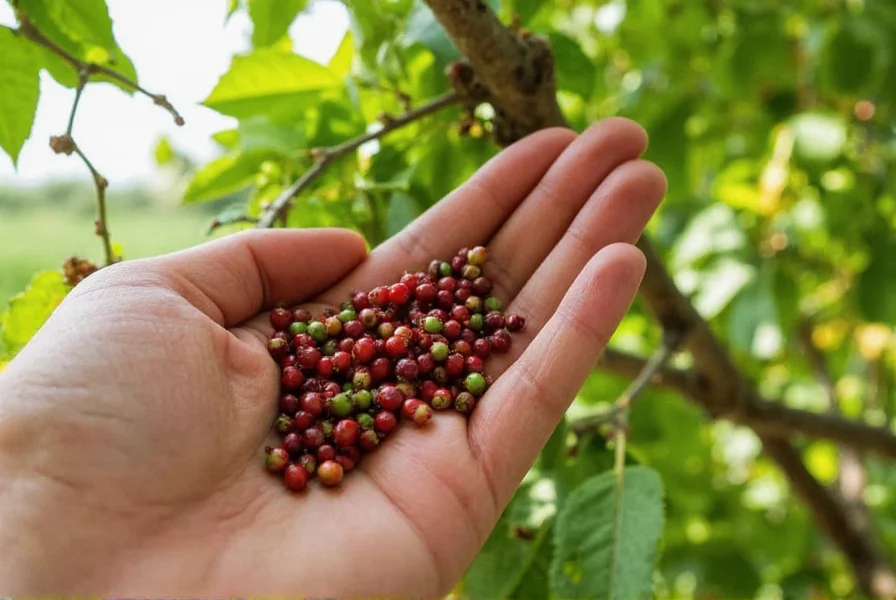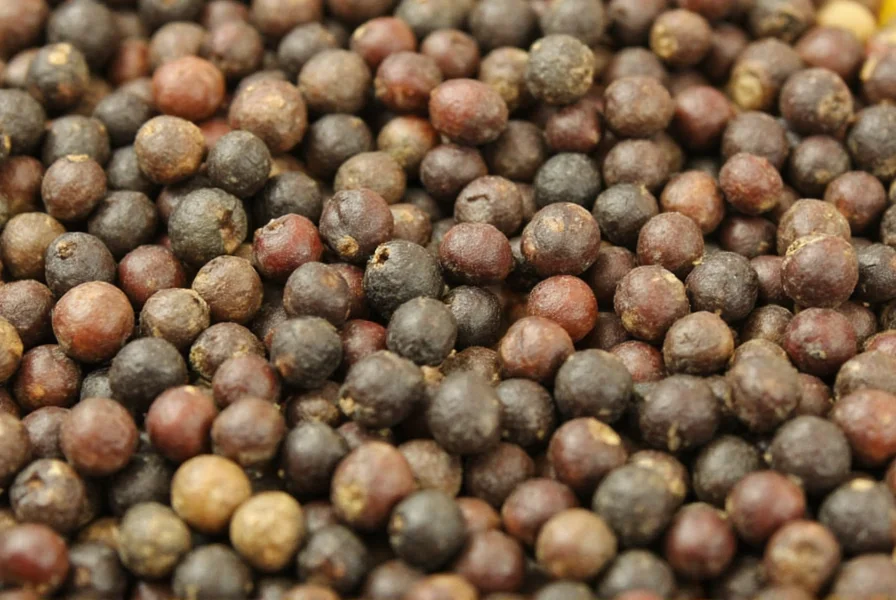When you grind peppercorns to season your food, you're using one of history's most valuable commodities. These small dried berries from the Piper nigrum plant have shaped trade routes, influenced economies, and flavored cuisines across the globe for millennia.
The Botanical Origin of Peppercorns
Despite their name, peppercorns aren't actually seeds or grains—they're the fruit of a flowering vine in the Piperaceae family. The Piper nigrum plant is a perennial woody vine that climbs trees or poles in tropical environments, producing clusters of small green berries that ripen to red. These berries are harvested and processed to create the various peppercorn varieties we know today.
Historical Journey of Peppercorns
Peppercorns have been traded along ancient spice routes since at least 2000 BCE. Indian merchants controlled the early pepper trade, with peppercorns becoming so valuable they were often used as currency—earning the nickname "black gold." Roman historians documented pepper's importance, and during medieval Europe, peppercorns were worth their weight in silver.
The quest for direct access to pepper cultivation areas drove European exploration. Portuguese explorer Vasco da Gama's 1498 voyage to India was primarily motivated by the desire to bypass Arab and Venetian middlemen in the pepper trade. Later, Dutch and British colonial powers fought for control of pepper-producing regions throughout Southeast Asia.
| Top Peppercorn Producing Countries | Annual Production (Metric Tons) | Global Market Share |
|---|---|---|
| Vietnam | 280,000 | 34% |
| Brazil | 80,000 | 10% |
| Indonesia | 75,000 | 9% |
| India | 65,000 | 8% |
| China | 25,000 | 3% |
Modern Peppercorn Growing Regions
While peppercorns originated in India's Kerala region, commercial cultivation has expanded throughout tropical regions where conditions support the Piper nigrum vine:
- India: Still produces high-quality Malabar and Tellicherry peppercorns, primarily in Kerala and Karnataka
- Vietnam: Became the world's largest producer after the 1990s, with most cultivation in Đắk Lắk Province
- Indonesia: Major producer of Lampung and Muntok white pepper from Sumatra
- Brazil: Significant producer of Brazilian black pepper, mainly in Pará state
- Madagascar: Known for unique, aromatic peppercorns with citrus notes
- Sri Lanka: Produces Ceylon pepper with distinctive flavor profile
The ideal growing conditions for peppercorns include tropical climates with temperatures between 75-85°F (24-29°C), high humidity, and well-distributed rainfall of 80-100 inches annually. The vines require support structures and thrive in partial shade, often grown alongside coconut or coffee plants in intercropping systems.

Different Types of Peppercorns and Their Processing
All peppercorn varieties come from the same Piper nigrum plant but undergo different processing methods:
- Black peppercorns: Made from unripe green berries cooked briefly in hot water, then dried. The outer layer turns black through enzymatic oxidation. Malabar and Tellicherry are premium varieties.
- White peppercorns: Produced from ripe red berries with the outer skin removed through soaking and rubbing, leaving only the seed. Muntok white pepper from Indonesia is highly prized.
- Green peppercorns: Unripe berries preserved through freeze-drying, brining, or sulfur dioxide treatment to maintain their green color.
- Red peppercorns: Fully ripe berries preserved similarly to green peppercorns, offering a fruitier, less pungent flavor.
Geographical Indications and Quality Differences
Peppercorns from specific regions develop distinctive flavor profiles due to terroir—the combination of soil, climate, and cultivation practices:
- Malabar peppercorns (India): Complex, woody notes with moderate heat
- Tellicherry peppercorns (India): Larger berries with more nuanced flavor and aroma
- Lampung pepper (Indonesia): Strong, sharp heat with earthy undertones
- Vietnamese pepper: Generally more pungent with slightly floral notes
- Madagascar pepper: Unique citrus and floral characteristics
The European Union recognizes certain peppercorns with Protected Geographical Indication status, including Tellicherry and Malabar from India, acknowledging their unique regional characteristics.

Sustainable Peppercorn Production Challenges
Modern peppercorn cultivation faces several challenges that affect global supply:
- Climate vulnerability: The Piper nigrum vine is sensitive to drought and excessive rainfall, making production vulnerable to climate change
- Disease pressure: Quick wilt disease has significantly impacted Indian production in recent decades
- Labor-intensive harvesting: Peppercorns must be hand-picked when berries reach optimal ripeness
- Market fluctuations: Prices can vary dramatically based on crop yields and global demand
Many producers are adopting sustainable farming practices, including organic cultivation, intercropping with other plants, and fair trade certification to ensure better conditions for workers and more stable markets.
Peppercorns in Global Cuisine
While peppercorns originated in India, they've become integral to cuisines worldwide:
- French cuisine uses white pepper in light-colored sauces where black specks would be undesirable
- Thai cooking often features fresh green peppercorns for their bright, floral notes
- Vietnamese pho typically includes whole black peppercorns in the broth for subtle heat
- Scandinavian dishes sometimes use juniper-berries alongside peppercorns for preservation
- Middle Eastern cuisine combines black pepper with other spices in blends like baharat
Understanding where peppercorns come from helps appreciate not just their flavor, but their historical significance and the complex journey from tropical vine to your kitchen spice rack. The next time you reach for that pepper grinder, remember you're using a spice that has connected cultures and shaped history for thousands of years.











 浙公网安备
33010002000092号
浙公网安备
33010002000092号 浙B2-20120091-4
浙B2-20120091-4